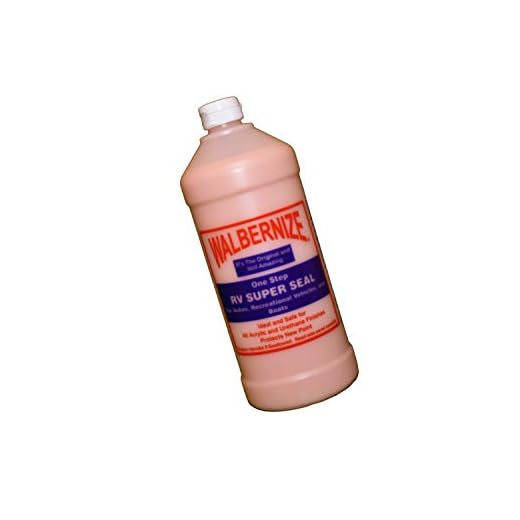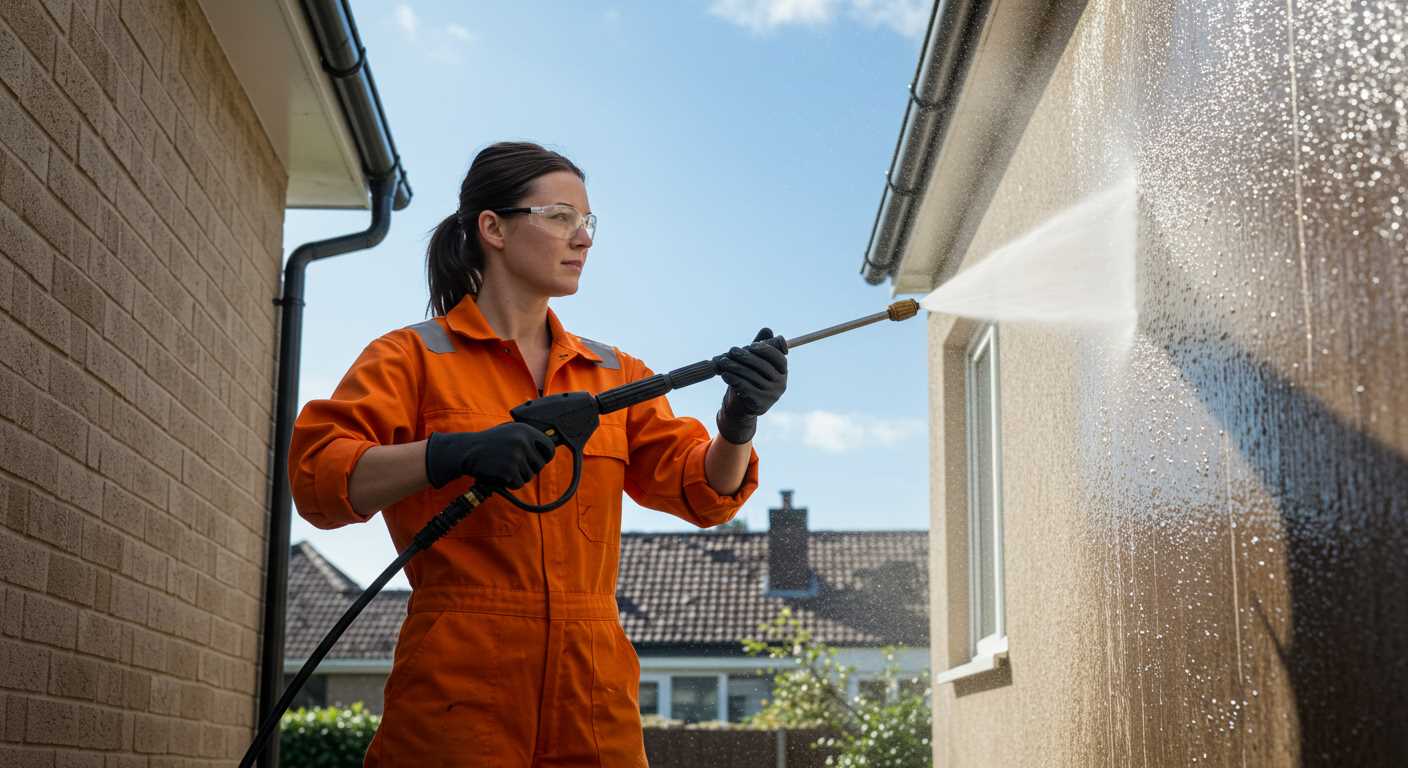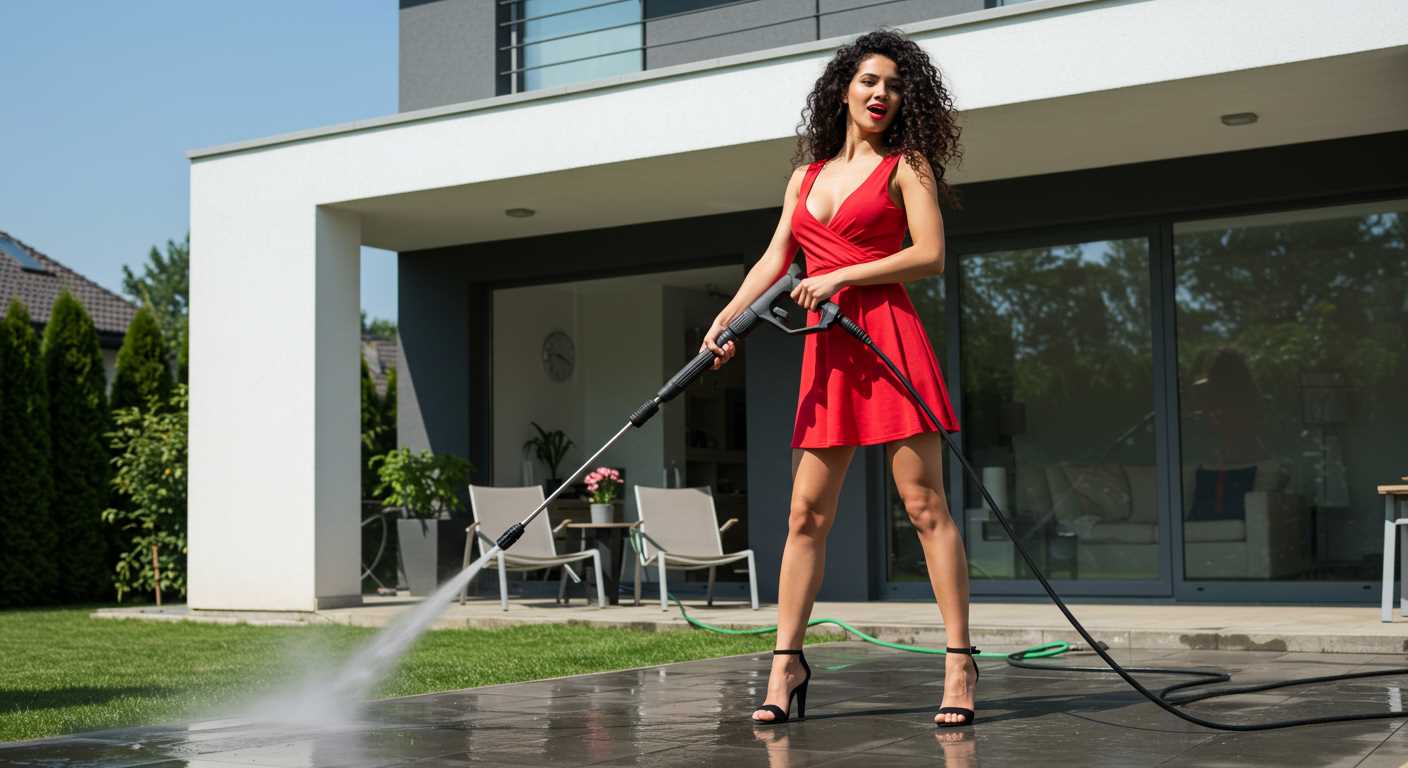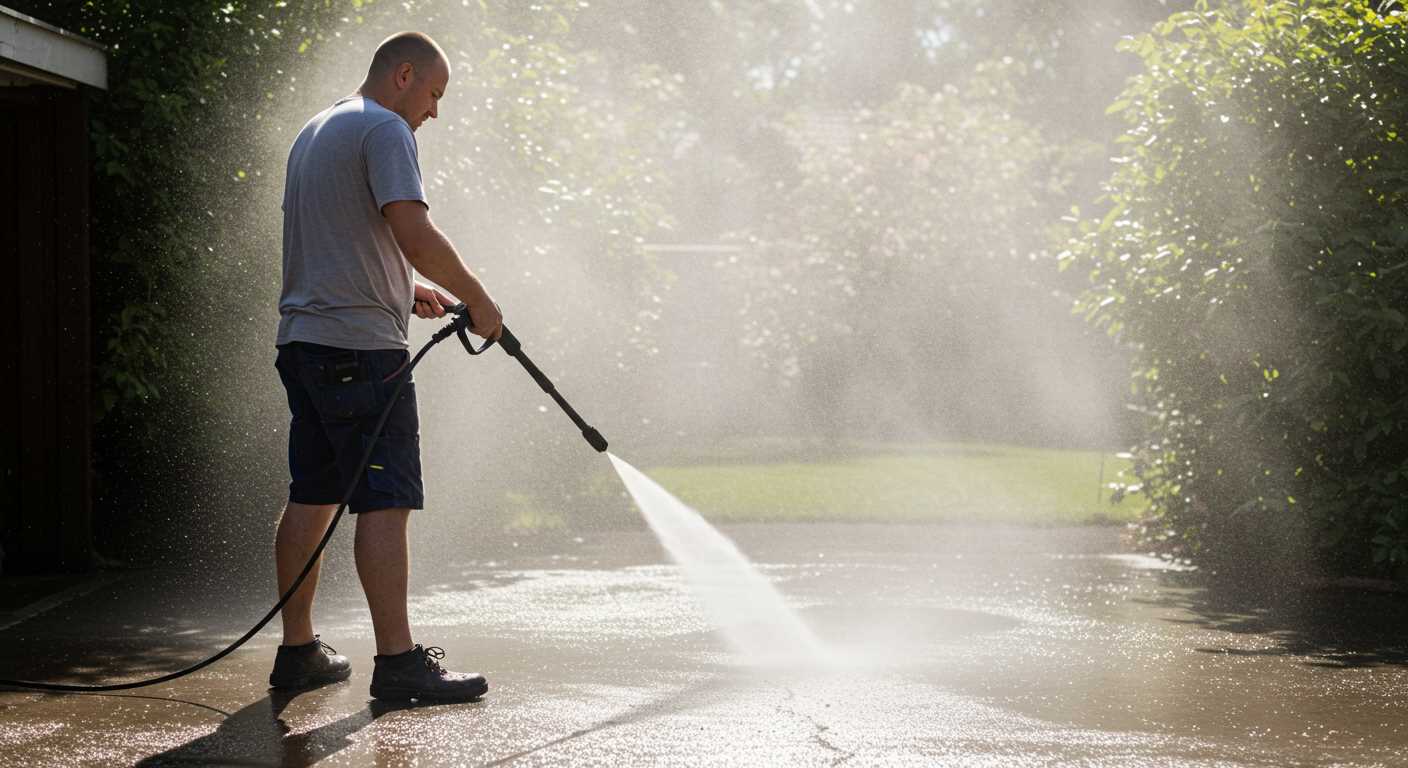



Testing various cleaning tools over the past decade has revealed one critical insight: using a high-powered cleaning device can jeopardise the integrity of protective layers on your vehicle. While these machines excel at eliminating grime and dirt, the force they generate can also compromise sensitive finishes if not used correctly.
When engaging in cleaning routines, it’s vital to consider not only the power settings but also the nozzle type and distance from the surface being cleaned. For instance, utilising a wide-angle nozzle and maintaining a significant distance can minimise the risk of damaging the exterior. However, direct, close-range application with a narrow nozzle at a high setting can strip away even the toughest finish.
In my extensive experience, I’ve observed that the condition of the protective layer–its age, the manufacturer’s specifications, and previous maintenance–plays a crucial role in how well it withstands the vigorous flow of water. Regular inspections and cautious cleaning techniques are essential in preserving your vehicle’s appearance and ensuring longevity. Always prioritise safety and best practices to keep the exterior looking pristine.
Impact of High-Pressure Cleaning Devices on Automotive Finishes
Using high-pressure cleaning devices on automotive finishes is a nuanced decision. These powerful tools can clean effectively but may also pose risks to the integrity of the vehicle’s surface protection.
Here are some factors to consider:
- Pressure Levels: Most automotive manufacturers recommend a maximum pressure not exceeding 1200-1900 psi for safe cleaning. Higher levels can strip finishes.
- Distance: Maintain a distance of at least 2-3 feet from the surface. Close-range cleaning can lead to damage.
- Nozzle Type: Choose a wide-angle nozzle (25-40 degrees) which disperses water more gently, as opposed to a narrow stream that focuses force.
- Surface Condition: Inspect the finish for existing chips or scratches; any imperfections can worsen with high-pressure cleaning.
- Cleaning Chemicals: Avoid harsh detergents that might react negatively with the vehicle’s protective layers.
The cumulative effects of these considerations can greatly influence whether the use of such devices will compromise finishes. I recommend testing on a small, inconspicuous area first to gauge the effect on the vehicle’s surface.
Understanding Automotive Finishes and Their Purpose
The primary function of automotive finishes is to protect the bodywork from environmental factors such as UV rays, dirt, and chemical pollutants. Advanced formulations create a barrier that enhances durability while providing aesthetic appeal. These innovations can include ceramic and polymer coatings, which offer superior longevity compared to traditional waxes.
Investing in a high-quality finish not only enhances the look of your vehicle but also contributes to its resale value. A well-maintained surface prevents the onset of rust and corrosion, which can lead to costly repairs over time. Regular maintenance, including appropriate washing techniques, is essential to preserve this protective layer.
It is crucial to choose the correct cleaning methods to avoid damaging these finishes. While some products can strip away contaminants effectively, others might compromise the integrity of the surface. Understanding your specific coating type will guide you in selecting the right cleaning regime.
Consult with professionals if you’re uncertain about maintenance procedures. They can provide tailored advice based on the specific characteristics and requirements of your vehicle’s finish, ensuring optimal protection and appearance.
How Pressure Washers Work: Key Features Explained
High-powered cleaning devices operate by drawing water from a supply source and forcing it through a motor-driven pump, increasing the water’s velocity and pressure. The nozzles play a crucial role, determining the spray pattern and intensity. A narrow nozzle creates a concentrated stream, ideal for stubborn grime, while a wider one disperses water for less intensive tasks.
The Role of Components

The main elements in these machines include the motor, pump, hose, nozzle, and sometimes an onboard detergent tank. Motors can be electric or petrol-powered, impacting portability and robustness. The pump converts normal household pressure into a much higher force, usually ranging from 1000 to over 4000 psi.
| Component | Function |
|---|---|
| Motor | Powers the device and determines portability |
| Pump | Increases water pressure for effective cleaning |
| Hose | Transports water to the nozzle |
| Nozzle | Controls spray pattern and intensity |
| Detergent Tank | Dispenses cleaning solutions for enhanced cleaning |
Safety and Usage Tips
Always wear protective gear, including goggles and gloves, to prevent injury from debris or chemicals. Start with the lowest pressure setting and gradually increase to find the optimal force for the task. Keep the nozzle at a safe distance from surfaces to avoid damage. Regular maintenance, such as cleaning filters and checking hoses for leaks, prolongs the lifespan of these machines.
The Impact of High Pressure on Different Coating Types

Coatings vary widely, and the effect of high water force on them can differ significantly. For example, ceramic and polymer layers are generally robust, designed to withstand the rigours of the elements. High-velocity water may remove surface contaminants without degrading these protective finishes. Yet, caution is crucial as prolonged exposure can still lead to erosion of the coating over time.
Soft vs. Hard Coatings

Soft coatings, such as traditional wax applications, are more susceptible to damage. Using high-force streams can strip away these layers quickly, resulting in the loss of shine and protection. On the other hand, hard coatings like clear bra films show resilience, but edges and seams remain vulnerable. I recommend maintaining a safe distance and using a fan spray rather than a concentrated stream to mitigate potential harm.
Testing Vulnerability
Before proceeding with a deep clean, it is wise to conduct a patch test in a less visible area. This allows you to gauge how the specific finish holds up against the blast. Consider adjusting pressure settings according to the type of finish; lighter settings can often yield better long-term results. Observing how different types react will provide invaluable insights for future cleaning sessions.
Comparing Pressure Washer Settings for Safe Use
Choose a lower setting, ideally around 1200 to 1500 PSI, for delicate surfaces like automotive finishes. This range mitigates the risk of damaging protective layers while providing effective cleaning. Adjust the nozzle to a wider spray pattern to disperse the force more evenly, reducing potential harm.
For more robust materials, such as the undercarriage, increase the setting to 2000 PSI but maintain a reasonable distance of at least 2 feet away. This distance helps maintain the integrity of components while ensuring thorough cleansing. Always test on a hidden area before proceeding with the entire surface.
Using the correct nozzle is key. A 25-degree nozzle offers a balanced approach for most surfaces, allowing efficient washing without excessive pressure. Reserve the 15-degree option, which concentrates power, for only the toughest grime and hard surfaces, ensuring it avoids sensitive areas.
Inspect the equipment before use. Ensure that hoses are intact and connections are secure to avoid unnecessary leaks and pressure loss. Regular maintenance prolongs lifespan and optimises functionality.
Lastly, harness the power of detergent through a dedicated injection system. Use mild automotive cleaners specifically designed for vehicle finishes to tackle stubborn dirt effectively without compromising surface integrity.
Common Mistakes When Using High-Pressure Cleaners on Vehicles
Using a high-pressure cleaner on your vehicle can lead to mishaps if not done correctly. One major blunder is selecting an inappropriate nozzle. A tighter spray can inflict damage on sensitive surfaces, while a wider angle may not effectively eliminate stubborn dirt. I recommend starting with a broader spray pattern and adjusting as needed.
Many individuals underestimate the distance while applying the nozzle to the surface. Holding it too close increases the likelihood of scratches and paint damage. Maintaining a recommended distance of at least 2-3 feet is crucial for a safe and thorough cleaning.
Another frequent error is neglecting to clean thoroughly before using a power cleaner. Debris and grime can become abrasive under high pressure, leading to potential harm. Always rinse or hand-wash larger particles before introducing high-velocity cleaning methods.
Furthermore, users often ignore the settings on their equipment. Operating on the highest force setting can be tempting, but it is unnecessary for most cleaning tasks. A moderate setting typically suffices for maintaining a vehicle’s pristine condition.
Not paying attention to the angle of approach is another common mistake. Spraying at an improper angle can force water into areas such as window seals or engine compartments, leading to moisture-related issues. Keeping the nozzle at a slight angle helps prevent water infiltration.
Many novices fail to consider the materials of their vehicles. Scrutinise the type of finish your vehicle has, as some surfaces are more susceptible to pressure damage than others. Non-metallic parts may require gentler treatment, so adjusting your technique accordingly is beneficial.
Finally, forgetting to protect sensitive areas, including badges, trims, and electrical components, can yield unwanted results. Covering these elements ensures they remain intact and unaffected by the cleaning process. Always double-check your preparations before initiating any cleaning regimen.
Testing Pressure Washers on Sample Coating Materials
Conduct tests with a variety of sample coatings to ascertain the effects of various cleaning devices. For accurate results, choose materials that reflect different types of automotive surfaces such as ceramic, wax, and sealants.
Begin with a controlled environment to apply each sample coating on panels. Allow the coatings to cure fully according to manufacturer specifications before initiating the cleaning assessment.
During testing, crucial aspects to consider include:
- Pressure settings: Start at the lowest setting and gradually increase to evaluate the threshold at which the surface begins to show signs of distress.
- Nozzle type: Experiment with different nozzle tips–0-degree, 15-degree, 25-degree, and 40-degree–to determine the best mode of action for each coating type.
- Distance from the surface: Maintain a standardised distance, usually 12-18 inches, to standardise results across all tests.
- Water temperature: Incorporate hot and cold water testing to measure how temperature affects cleaning efficiency and surface integrity.
During each round:
– Observe for any signs of coating degradation, such as peeling, dulling, or removal.
– Document findings meticulously to identify which combinations of pressure, nozzle, and distance maintain the integrity of the surface.
Standardised testing protocols establish consistency and reliability in results, providing insights to make informed recommendations on the safe use of such equipment with automotive surfaces.
Analysis of results will reveal specific thresholds. For example, a ceramic finish may withstand higher settings compared to traditional wax. Aim to compile a detailed report for each tested surface to guide future users in making safer choices.
Based on observed outcomes, creating a user guide can encapsulate practical advice derived from testing, ensuring a balance between cleanliness and preservation of surfaces.
Alternative Methods for Cleaning Without Removing Coating
Soft washing stands out as an ideal solution for preserving the integrity of protective layers. This method employs low-pressure water mixed with specialised detergents to gently cleanse surfaces without causing damage.
A microfiber cloth or sponge provides a safe option for manual cleaning. Using these tools with appropriate cleaning agents allows for effective removal of dirt and grime without risking the underlying finish.
Detailing sprays offer an additional safeguard against abrasives. These sprays often contain lubricants and cleaning agents that lift contaminants, reducing friction and preventing scratches during the cleaning process.
Choosing the right pH-balanced car soap can significantly enhance the cleaning task. Non-corrosive formulations contribute to a thorough cleaning while ensuring the protective coatings remain intact.
Utilising a foam cannon with a garden hose can also be beneficial. This technique applies a thick, even layer of foam, which adheres to surfaces, allowing dirt to break down before rinsing, thus minimising the risk associated with high pressure.
Regular maintenance, including prompt removal of bird droppings and tree sap, can help avoid the need for aggressive cleaning methods later. This proactive approach supports the longevity of any protective surface treatments.
Maintaining Your Vehicle’s Finish Post-Cleaning

After utilising a cleaning device, several steps ensure the longevity of your vehicle’s protective layer. First, it’s imperative to dry the surface thoroughly using a microfiber towel to prevent water spots. This step is critical, as residues can lead to unwanted damage.
Applying a Sealant
Consider applying a sealant after drying. This layer helps bolster the protective finish and can enhance shine. Choose a sealant compatible with the type of finish you have. Regular application, every few months, significantly extends the lifespan of the protective properties.
Regular Inspections
Conduct routine checks on the surface. Look for signs of wear or damage. If any dull patches or chipping appears, act promptly to address these issues. Using a maintenance product designed for your specific type of finish will help restore luster and protection.
Remember to wash your vehicle regularly with gentle soap formulated for automotive finishes. Avoid harsh detergents that can strip protective materials. Following these guidelines will keep your vehicle looking pristine for years to come.







